Crown vs Veneer
This traumatic injury illustrates the significant difference between a crown preparation and porcelain laminated veneer preparations. Figures 1-4
show the broken natural crown and part of the front tooth root as a result of tripping and falling flat on the face.

fig. 1
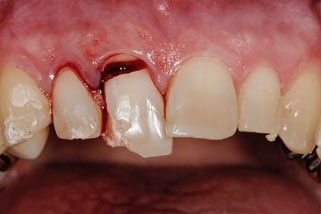
fig. 2
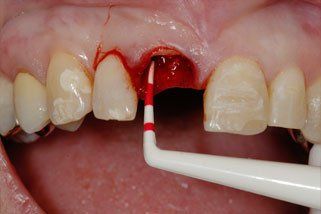
fig. 3
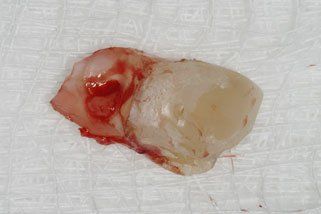
fig. 4
The remaining good root is slowly pulled out of the bone in Fig. 5
(forced orthodontic eruption). The broken tooth (right central) is then prepared for a crown after a root canal therapy and placement of a post and core foundation (Fig. 6) The left central incisor was restored with a porcelain laminated veneer to replace a previously composit bonded incisal edge to match the symmetry of the extruded broken tooth.
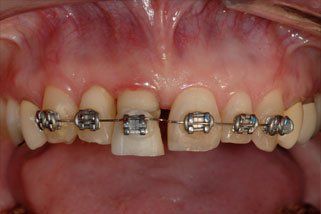
fig. 5
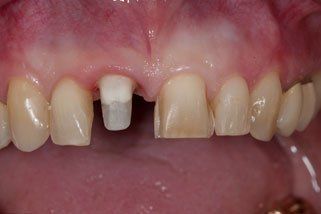
fig. 6
As can be seen from different views of the fabrication casts in Figures 7-10, the removal of tooth structure is much more extensive with a crown, which is why a veneer restoration may often be the more conservative choice.
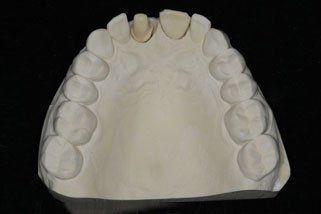
fig. 7
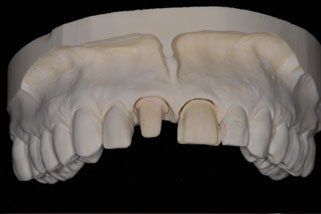
fig. 8

fig. 9
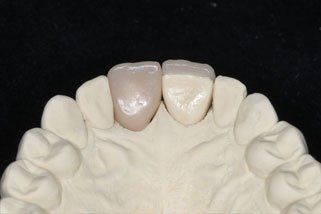
fig. 10
In reality, each case has different factors which determine what kind of a restoration should be placed. The final treatment outcome can be seen in Figures 11-12
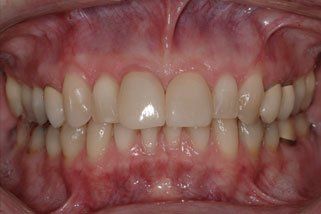
fig. 11
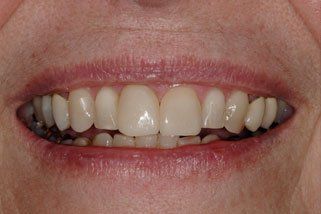
fig. 12
A complex situation like this may have an obvious diagnosis, but the treatment planning can be quite veritable. The following questions for example may be considered:
- Is an implant (artificial root) a viable alternative?
- What are the pros and cons of placing an implant?
- Is a root canal therapy needed to save a tooth?
- What about a fixed bridge?
Last but not least : What influences the treatment plan? An insurance network policy or the dentist and the patient?